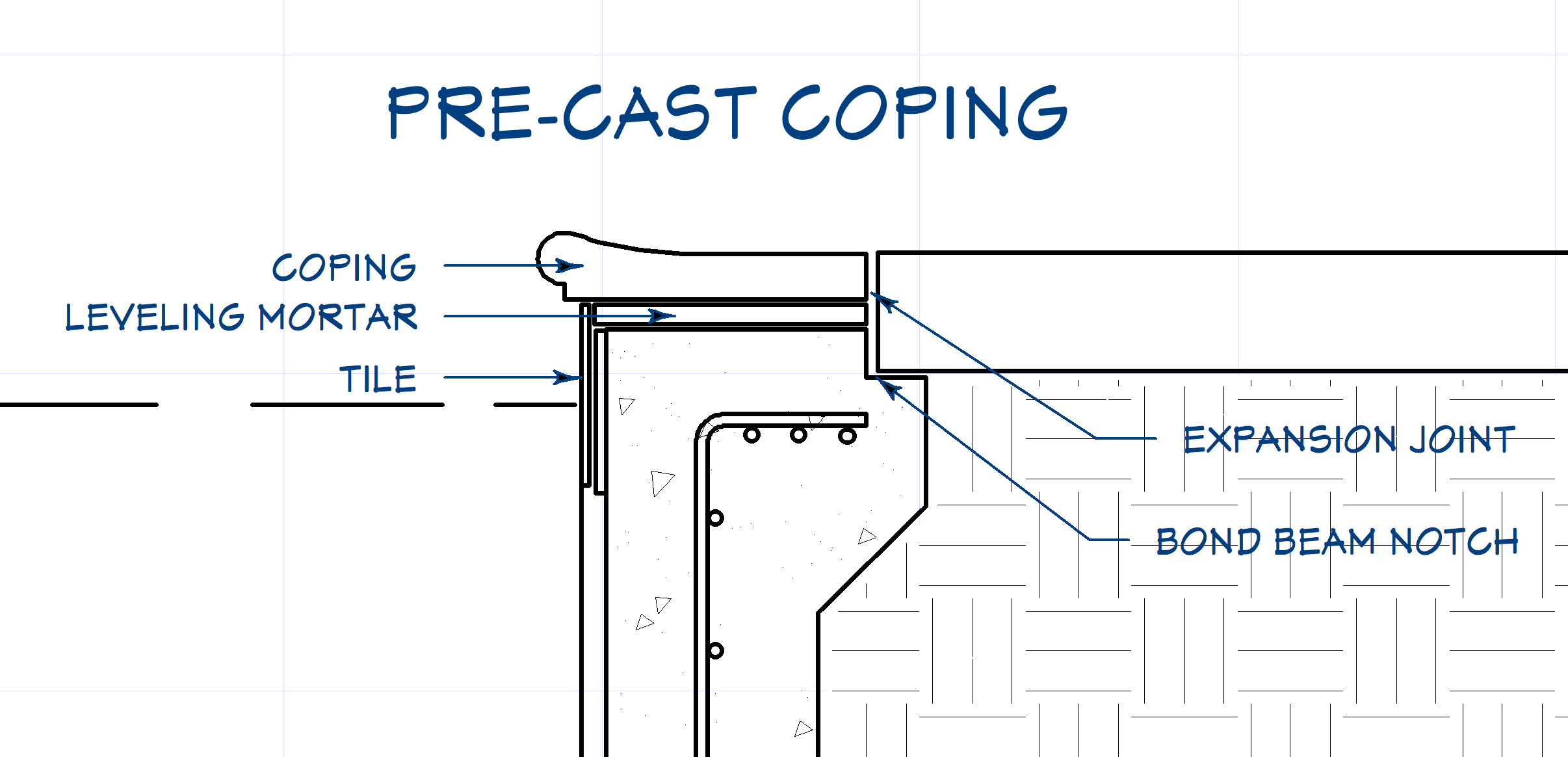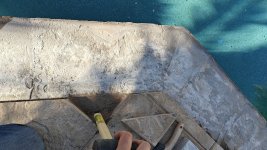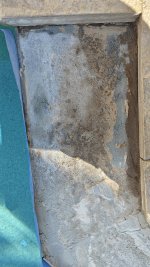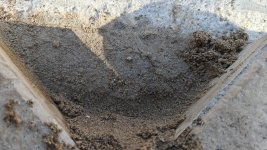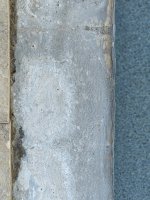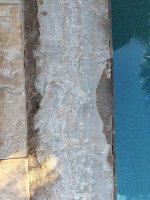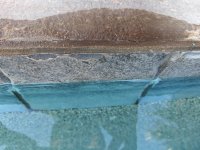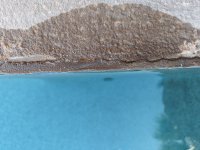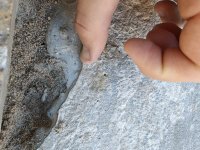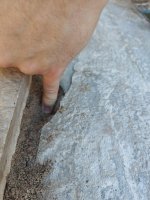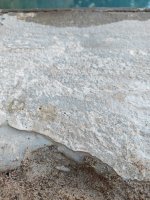Hey everyone,
I recently moved into a house with a pool in Phoenix (built in 2008). Inspector flagged a couple loose travertine coping stones before purchase, but I didn’t think much of it at the time, being a first-time pool owner.
Well I just pulled the culprits out to glue them back onto the pool beam, and literally all coping stones came out. All had broken off from the pool beam, but they remained in place from being interlocked. As you can imagine, all of the caulking around the coping stones is cracked or gone. Stones were fixed to beam with gray mortar (pale gray mortar between coping stones and black mortar between tiles & coping).
Now the real treat is that pulling them all out made me realize there is no expansion joint (possibly sand, initially, but no spacer/caulking or any space for any of it). You can’t slide a piece of paper between the coping and decking stones in most places – so I don’t even know how I would waterproof from here (?). Is it a Phoenix thing to not need an expansion joint since temperatures don’t dip below zero? I am resigning to just glueing the coping back to the beam as it was, unless someone has a better idea. Otherwise I think ½” would have to be taken out the back of all coping stones to make room for the expansion joint, but I’m not equipped for that. Considering the pool/decking is 15+ years old, I imagine the bulk of the settling is done, and seasonal variation is not extreme enough to warrant putting in a new expansion joint...? Might be wishful thinking.
This pool was built by the biggest pool builder in town, but they said this was no longer under warranty, and that they didn’t have any records or blueprints to help me out.
After doing a lot of reading on this forum, I would gladly take someone’s second opinion on the way forward. Last thing I want to do is make matters worse, but this has to be a DIY project (that hopefully lasts a couple years).
As it stands, my plan is to:
1-Clean all coping stones of leftover grout with chisel & clean stone bottoms & beam tops with wire brush
2-Glue coping stones back to beam as they were (with polyurethane construction adhesive)
3-Polysand where I can on the side and back of coping stones (most places there is no gap whatsoever so there will be no waterproofing)
4-Caulk between pool tiles and coping bottoms (where there was black mortar)
5-Hope for the best
Any feedback appreciated.
Thank you!
I recently moved into a house with a pool in Phoenix (built in 2008). Inspector flagged a couple loose travertine coping stones before purchase, but I didn’t think much of it at the time, being a first-time pool owner.
Well I just pulled the culprits out to glue them back onto the pool beam, and literally all coping stones came out. All had broken off from the pool beam, but they remained in place from being interlocked. As you can imagine, all of the caulking around the coping stones is cracked or gone. Stones were fixed to beam with gray mortar (pale gray mortar between coping stones and black mortar between tiles & coping).
Now the real treat is that pulling them all out made me realize there is no expansion joint (possibly sand, initially, but no spacer/caulking or any space for any of it). You can’t slide a piece of paper between the coping and decking stones in most places – so I don’t even know how I would waterproof from here (?). Is it a Phoenix thing to not need an expansion joint since temperatures don’t dip below zero? I am resigning to just glueing the coping back to the beam as it was, unless someone has a better idea. Otherwise I think ½” would have to be taken out the back of all coping stones to make room for the expansion joint, but I’m not equipped for that. Considering the pool/decking is 15+ years old, I imagine the bulk of the settling is done, and seasonal variation is not extreme enough to warrant putting in a new expansion joint...? Might be wishful thinking.
This pool was built by the biggest pool builder in town, but they said this was no longer under warranty, and that they didn’t have any records or blueprints to help me out.
After doing a lot of reading on this forum, I would gladly take someone’s second opinion on the way forward. Last thing I want to do is make matters worse, but this has to be a DIY project (that hopefully lasts a couple years).
As it stands, my plan is to:
1-Clean all coping stones of leftover grout with chisel & clean stone bottoms & beam tops with wire brush
2-Glue coping stones back to beam as they were (with polyurethane construction adhesive)
3-Polysand where I can on the side and back of coping stones (most places there is no gap whatsoever so there will be no waterproofing)
4-Caulk between pool tiles and coping bottoms (where there was black mortar)
5-Hope for the best
Any feedback appreciated.
Thank you!
Attachments
-
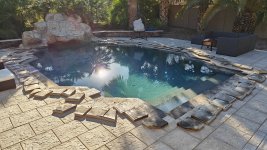 IMG20240212085549.jpg601 KB · Views: 89
IMG20240212085549.jpg601 KB · Views: 89 -
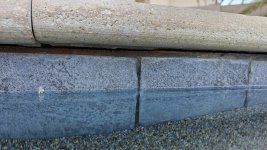 IMG20240214171716.jpg467 KB · Views: 87
IMG20240214171716.jpg467 KB · Views: 87 -
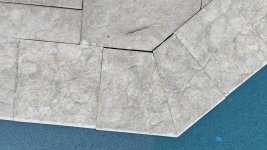 IMG20240214160956.jpg521.4 KB · Views: 71
IMG20240214160956.jpg521.4 KB · Views: 71 -
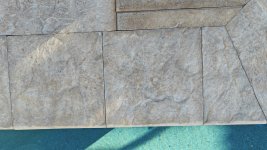 IMG20240214160922.jpg517.6 KB · Views: 75
IMG20240214160922.jpg517.6 KB · Views: 75 -
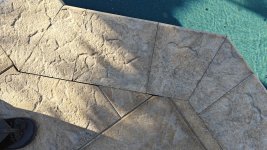 IMG20240214160914.jpg597.8 KB · Views: 76
IMG20240214160914.jpg597.8 KB · Views: 76 -
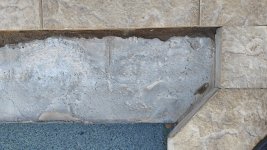 IMG20240214160838.jpg606.6 KB · Views: 77
IMG20240214160838.jpg606.6 KB · Views: 77 -
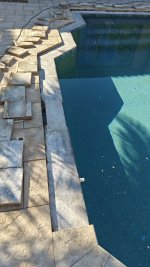 IMG20240214150906.jpg540.8 KB · Views: 78
IMG20240214150906.jpg540.8 KB · Views: 78 -
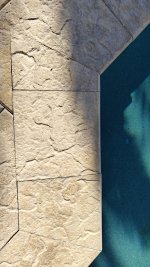 IMG20240214150850.jpg539.6 KB · Views: 75
IMG20240214150850.jpg539.6 KB · Views: 75 -
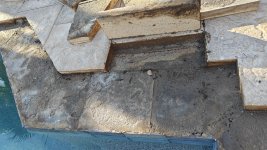 IMG20240212085841.jpg639.5 KB · Views: 241
IMG20240212085841.jpg639.5 KB · Views: 241


